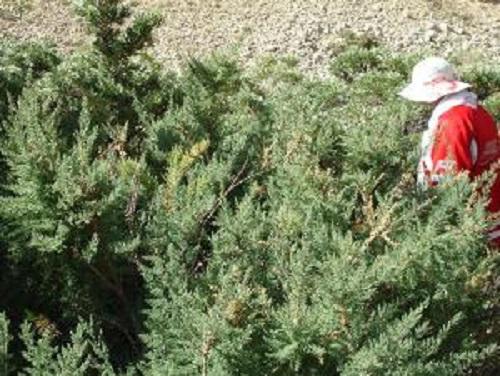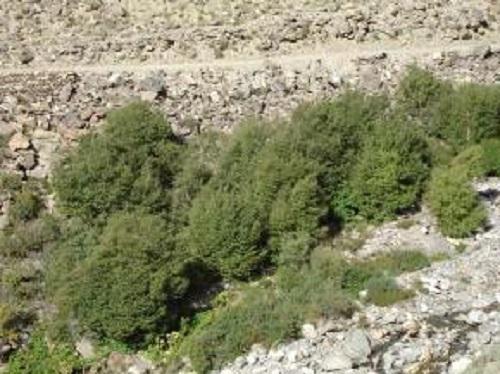Dovutsho
The aim of this project is to collect plants material and make exposition in Botanical garden.

The Vakhan part of GBAO is the boarding territory of Tajikistan, located in the upper parts of the pamir river Pyanj and one of its riverheads Pamir. The second riverhead (Amu Darya) is the river Vakhan darya. which is in the neighbouring districts of Afghanistan. Historically, Vakhan covers also the part of the Badakhshan in the territory of Tajikistan and a part of Afghanistan Badakhshan.

Meantime, there were collected some types, in common with Gindukush and Western Himalayas, which are not met in other districts of Badakhshan. and the endemic types (Stellaria alexeenkoana, Nepeta vakhanica). In this place situated the Zorkul reservation area with many rare species of flora and fauna. It is obvious that the protection of the diversity of the flora and fauna of the world has very big significance and importance for the humanity. So the research undertaken in this proposal is as important for the science of the targeted countries as for the whole world. The detailed research of the areas mentioned above will give us opportunities to shed lights on the origins, location/place of habitat of the flora and fauna of the whole mountainous Asia. It needs to be mentioned that the research areas targeted in this proposal haven't been targeted in any researches carried for the last 25-30 years.
The following section will introduce some of the researches that were carried at the territories mentioned in this proposal.
The Contribution of Work:
Collecting herbariums and business trips to the targeted areas of Vakhan-Badakshan, Afghanistan and bordering territory of Tajikistan with China with be the main sources of the research. The collected herbariums will be registered and given to the concerned organizations. The following aspects will be the results of the research undertaken:
1. The complete analysis of the flora (taxonomic, geographic, biological and ecological) in regards to their evolution and origin.
2. Identification of the similarities and general genesis of the flora of the countries targeted in the research.
3. Identify the migrating animals at the targeted territory of the tree countries.
4. Shed lights on the location and time of the daily, foddering and seasonal migration of the migrating animals.
Outcomes:
"Vegetation of the south-west Pamirs"- 1965-1970 by Kurbonbekov Z; "The flora of ethemers and ethemeroids of the south-west Pamirs"- 1969-1972 by Abramov N.B. Anderson and Podlech, carried some researches on the territory of Vakhan-Afganistan in 1972. Research of the flora of the South-West of Shugnan range in 1984 by A.B Dengubenko; "The reservoir of the River Yazgulom" in 1978 by Darvaziev M; " Flora of Garm-Chashma"in 1985 by Sultonov C; "The flora of the Western part of the Rushan range" in 1988 by Navruzshoev D; "The flora of the ravines of the Western Pamirs" in 1989 by Munavarov; "Flora of the vegetable reservoir of the river Bartang" in 1996 by Navruzshoev D; "Determinant оf the plants" in 1963 by Ikkonnikov; "Determinant of the highest plants of Badakhshan" in 1979 by Ikkonnikov; "The flora of Tajikistan " in 1937, 1957-1990.
Some herbarium of these areas is also available. The last volume of the "Flora of Tajikistan" also contains some new kinds of items for the whole Tajikistan and for the science in general.
Consequently, it is evident that in none of the researches mentioned above reflect the issues and regions in this proposal is deeply.
Activities and Methodology:
Study of flora puts base for rationale utilization and organization of security of biological diversity. While knowing the flora, we simultaneously get also a base for understanding the main minerals used in the area of plants-food, folder, drugs, appertaining to dyes, for essential oil and so on. We get an opportunity to reveal the whereabouts of the particularly seldom (and endemic) types of plants, evaluation of opportunities for collecting seeds (or planting materials) of seldom types for further introduction in botanical garden.
It should also be mentioned that a proper completed inventory of flora gives opportunity to compare it with neighbouring flora, reveal more common and differential types. Based on these material assess endemism of the comparative flora and reveal some features of possibility of more exact figures on the quantity of most rare and disappearing animals and herds of the region.